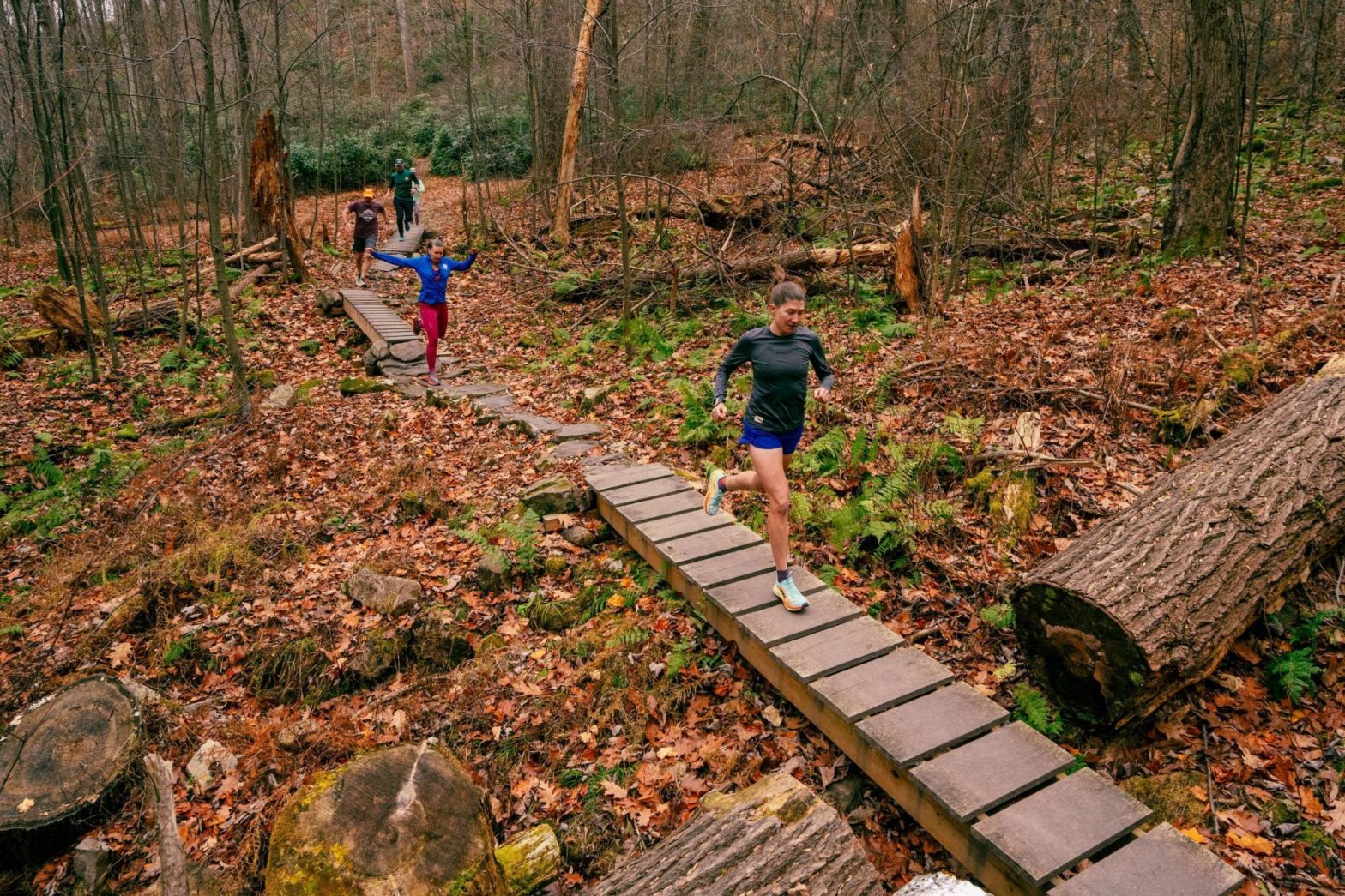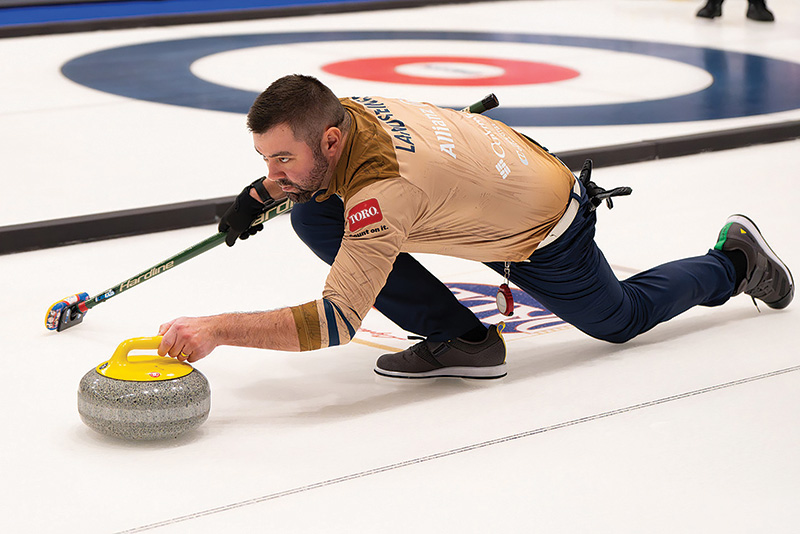
With the Winter Olympics set for early 2026, the USA Curling team is hard at work shaping its national program, where precision, teamwork, and strategy will come together to ideally produce victory on the ice.
First up are the Olympic Team Trials, which take place this November in Sioux Falls, South Dakota, with some of the nation’s top curlers sharpening their skills with coaches and program officials working behind the scenes to assemble teams capable of competing
at the highest level.
From selecting athletes to fine-tuning team dynamics and planning the trials themselves, the process involves a lot of preparation to build a winning squad in a sport where every stone and sweep can make the difference between victory and defeat.
Team USA curling coach Phill Drobnick started playing professionally in the 1990s and went on to become one of America’s brightest curling stars, winning the Junior World Championships in 2000. He eventually transitioned to a coaching role and has led his teams to three-straight Junior National Championships, a Junior World Championship, and a bronze medal at the Junior Worlds.
In 2010, Drobnick coached the U.S. Olympic team and today serves as the national team director for USA Curling, overseeing the entire program.
“When selecting athletes for the national team, we focus on four core things: fitness, on-ice ability, how they work with others, and coachability,” he says. “A typical training cycle includes daily individual practice and gym sessions, team practices two to three times a week, and competition play every other weekend. We prepare for strategy in real time by watching ice conditions, identifying strengths and weaknesses of opponents, and adjusting game plans accordingly.”
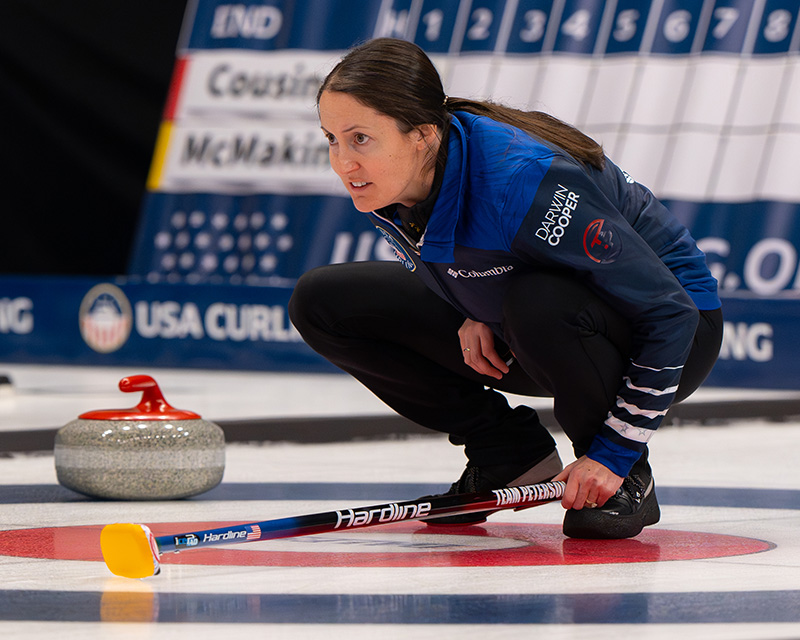
Understanding the sport
Although curling is gaining in popularity, it’s still a relatively unknown sport to the majority of non-sports fans, many of whom see it as a novelty sport at the Olympics. Still, Drobnick notes that curling is definitely getting more attention, especially since the U.S. took home gold at the 2018 Olympic Games.
In fact, the latest figures from USA Curling show that there are more than 200 curling clubs in the nation, and at least 25,000 curlers—both men and women—participate in the sport.
A standard curling match consists of eight to 10 ends, with each end roughly taking 15 minutes, so a full game usually lasts about two and a half hours. Points are scored at the conclusion of each end with the team with a stone closest to the center of the house (the target circle, or “button”) scoring one point for each stone closer than the opponent’s nearest stone.
The curling team is made up of four players, each with a distinct role.
“The lead has to have finesse and great touch to set up the end and be one of the best sweepers on the team,” Drobnick says. The second needs to be needed and able to make soft draw shots, throw takeouts when needed, and help clear things up if an end isn’t going well, he explains. Meanwhile, the vice skip is the communication link, making sure the front end and skip are on the same page, while also being able to make all shots and contribute strategically. Finally, the skip is the captain of the team, calling the shots, reading the ice, and handling the pressure of throwing the last shots for the win.
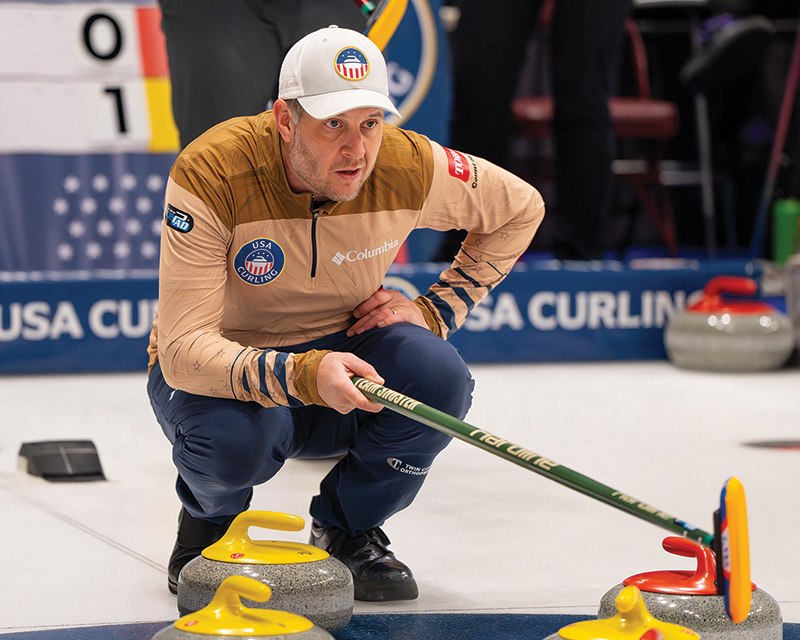
Championship players
John Shuster, the veteran U.S. Olympic curler who led the U.S. team to gold in 2018, is skip of Team Shuster. He traces his love for the sport back to childhood evenings spent at his local curling club, watching his father play. By sixth grade, he was throwing his first rocks, captivated by the strategy and precision of the game. Shuster credits much of his success to surrounding himself with world-class teammates. “You have to have four players who are not just strong at their position, but strong at the game of curling as a whole,” he says, reflecting on the essential ingredients for a winning team.
As skip of Team Peterson, three-time women’s national champion Tabitha Peterson understands what it takes to lead a team to the Olympic level and shares it’s a combination of being ready physically and mentally.
“We do consistent, frequent work with our sports psychologist, individually and as a team,” she says. “We have found over the years that it helps a lot. We’ve learned so many strategies to help improve performance and to perform under pressure. Physically, we strength-train in the gym with a trainer, practice on the ice as often as possible when we aren’t on the road traveling, and play in tournaments to get games under our belts.”
She knows from experience that the Olympics are a whole different beast, and the unlikely happens. “So, even after a couple missed shots, a couple bad ends, or a few losses, you can never give up,” Peterson says. “Pressure is and can be a powerful thing for all the teams competing, so it’s important to focus on the process, do the things you can control to the best of your ability, and then just see what happens.”
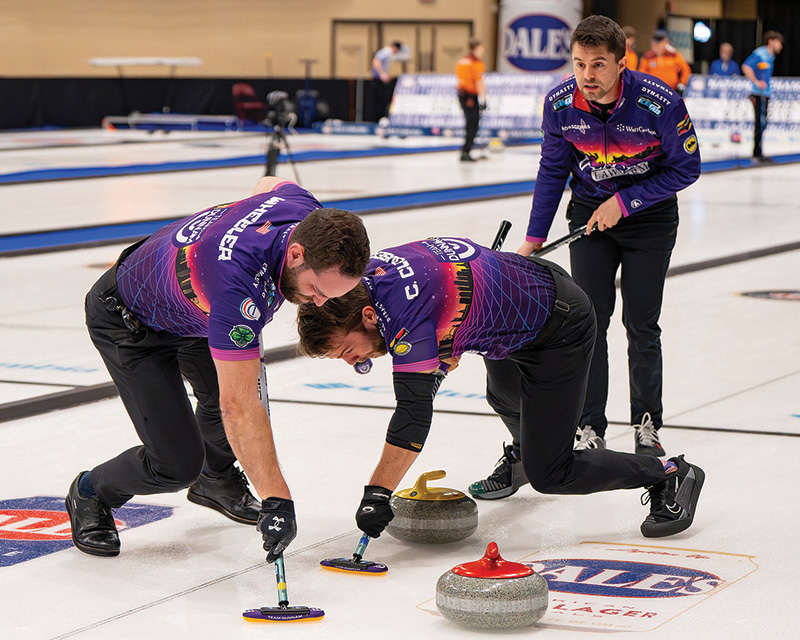
Winning combination
For Drobnick and the national team, the goal is to go into every international event as the best-prepared team possible. “Preparation, practice routines, and exposure to high-pressure moments are what make the difference at the top level,” he says.
Beyond skill and fitness, Drobnick notes a winning team needs players who bring energy, someone analytical who can assess risk, leaders who can step up, and role players who manage the ice and game systems.
“Leads and seconds need to be strong sweepers,” Peterson says. “A lead needs to have good weight control, and a second needs to be able to throw big weight accurately. Thirds and skips have more variety of shots and have to be good at calling the line. Line calls can make or miss a shot. Put it all together and you’ve got yourself a good curling team.”
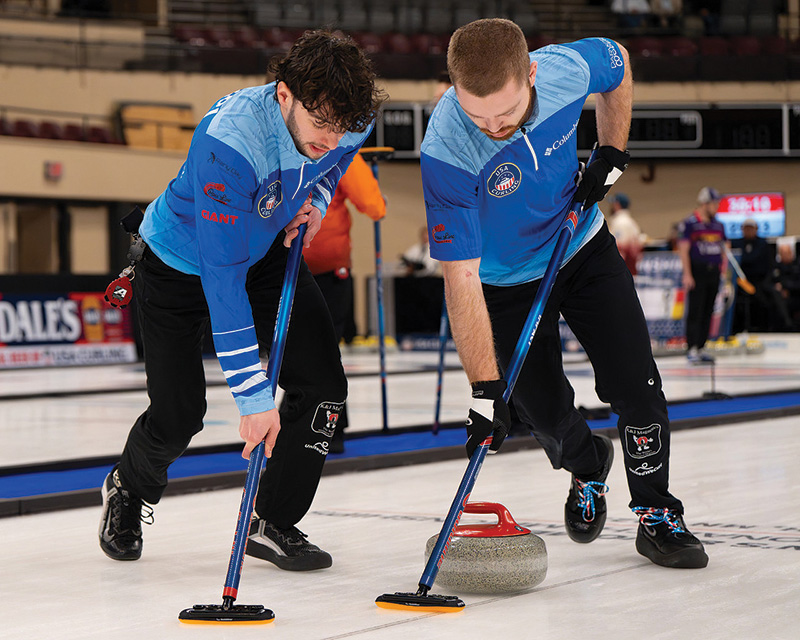
Support system
Curling has evolved tremendously in popularity and professionalism. In fact, since 2010, there’s been a greater emphasis on fitness, training, and supporting athletes full-time.
When hosting the Olympic Trials, USA Curling focuses on providing pristine ice conditions, easy arena navigation, adequate locker room space, and everything athletes need to perform at their best.”
Peterson notes that the athletes get great support from USA Curling and the USOPC, including sports psychologists, trainers, and nutritionists.
“Plus, for me as a new mom, I’ve had access to breast milk storage/shipping help,” she says. “If there is something we need, we just ask, and there is likely someone who can help. For skill development, we do video work, statistical analysis, and game review, all with coaching staff who specialize in each aspect of the game.”
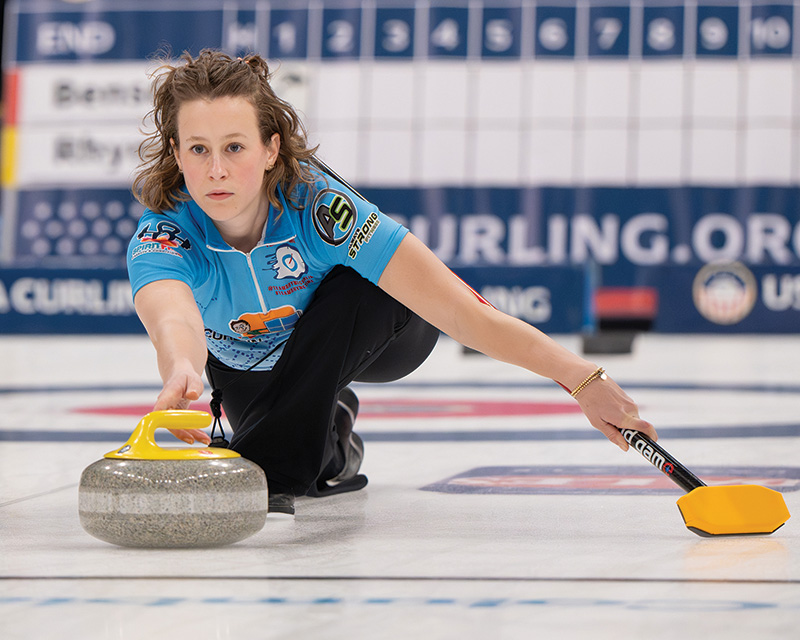
Team chemistry
Chemistry among teammates comes from lots of repetition and time together, and camaraderie is a big part of what makes the national team special.
“We are always trying new things to be even just one percent better,” Peterson says. “Trust is earned, and chemistry comes with team bonding and forming friendships with teammates. We always say we all have the same common goal, so let’s work together to achieve it. This means being vulnerable and open, and we lean on our sports psychologist a lot for help in this area.”
With the Olympic Team Trials coming this month, Shuster and his squad are deep into preparation, balancing tournament play with targeted practice.
“It’s a mix of playing a lot of games, but also timing it right,” he says. “You want to be ready to perform at the best level come trials.”
Passing the torch
When it comes to creating the next generation of world-class curlers, Drobnick says that local clubs need to provide space, resources, and coaching for junior curlers so they can dream of being Olympians and develop the skills to get there.
“For young curlers, there’s no substitute for being on the ice, practicing daily, working on off-ice skills and starting fitness programs at a younger age rather than waiting until national-level competition,” he says.
For aspiring curlers, Shuster emphasizes experience and connections as keys to making it in the sport. “There’s no substitute for practicing, watching games, and playing against the best competition you can find,” he says. “Forming relationships with fellow players can also open doors to potential teammates.”
When she’s approached by a young curler about following in her footsteps, Peterson is ready with some sage advice. “A lot of shot making comes down to feel,” she says. “You could have a textbook delivery and still not make the shot. I think repetition and practicing with a purpose will yield great results.”
She also shares it’s important to be levelheaded and able to move on easily and quickly from a missed shot. And there’s one aspect she notes is vital. What’s that? Says Peterson: “It’s important to have fun.”








